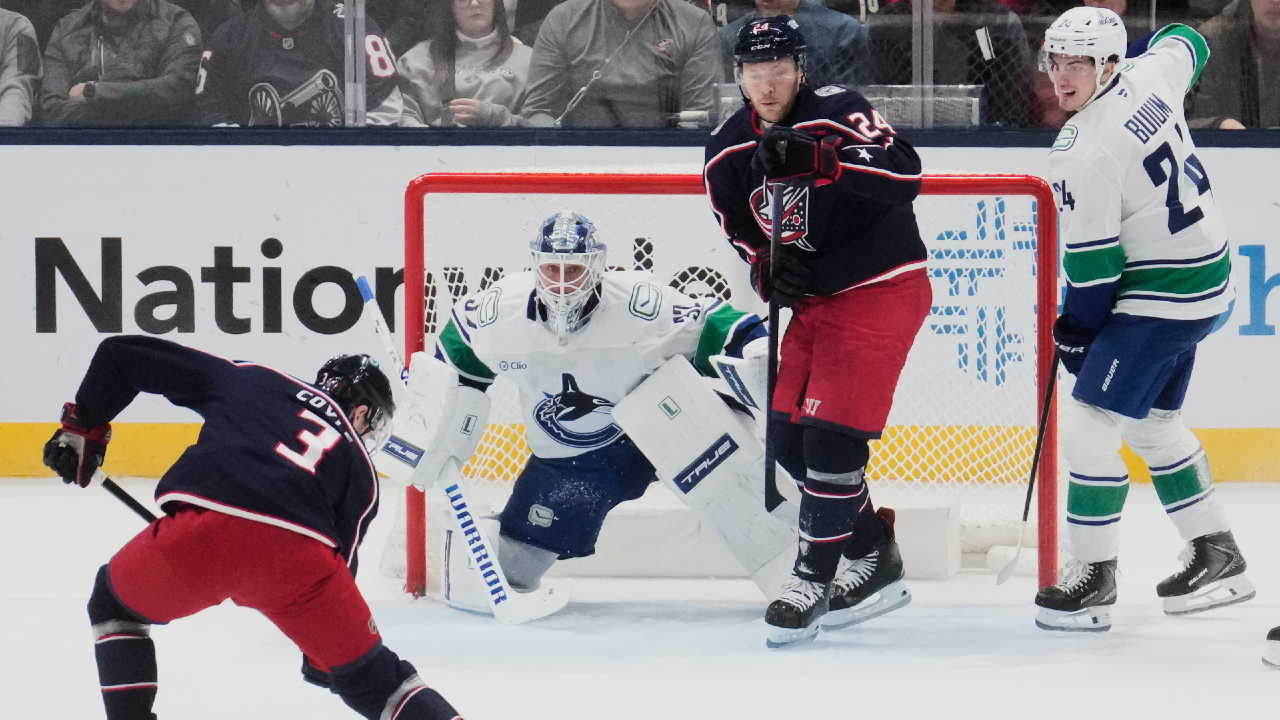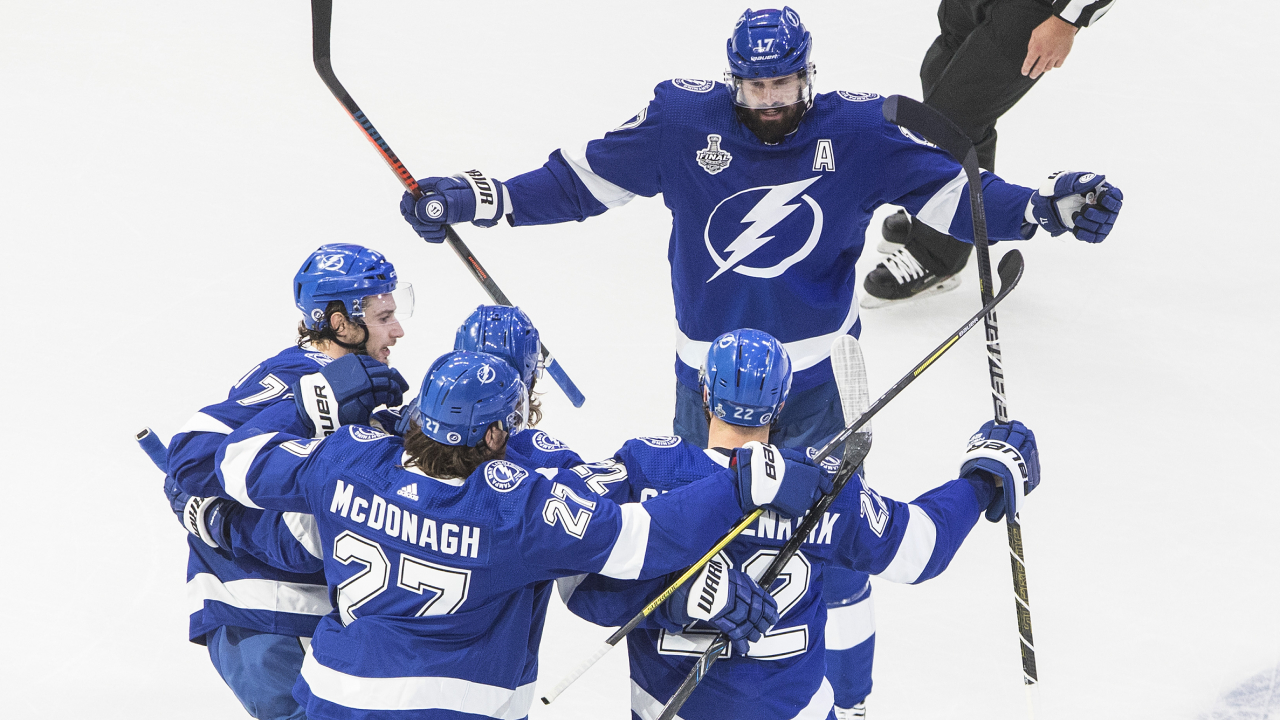
Heading into the playoffs, the Tampa Bay Lightning boasted one of the best power plays in the NHL, converting at a 23.1 per cent clip through 70 games. It was just another way they could beat you, among many. A success rate like that can create a fear of taking penalties against them too, in theory freeing up their skill by a few extra inches all over the ice.
However, they hadn’t been wielding that weapon with much might in the post-season. Heading into Game 2 versus Dallas they had played 17 playoff games, scoring on the power play in just four of them. Their PP goals-per-game rate had dropped from 0.70 to 0.47, which at this time of year could be the difference between a game won or lost, and in turn, a series.
A big difference, of course, has been the lack of Steven Stamkos. The Bolts captain led the team in power play goals in the regular season with 10 in just 57 games played, but even that undersells his value to their top unit.
Stamkos’ presence on the left flank establishes a threat that makes opponents cheat. It puts a certain play in their mind — the Stamkos one-timer bomb — and it gets them leaning. They know it’s a weapon, they want to prevent it, they’re thinking about it, and then OOP, will you look at that, something else opened up because of that lean.
Alex Ovechkin and the Capitals’ power play hasn’t been successful for a decade just because he shoots it in the net a lot. He assists on goals without actually getting assists by physically just being there. Stamkos provides something similar.
Without him there’s been no PK lean, and in turn, lanes are a little bit tighter all over. Suddenly, the Bolts look less like the Harlem Globetrotters and more like a pretty middling team having a pretty middling night. Prior to Monday’s game they were 13th among playoff teams this year with a 17 per cent conversion rate.
Not great, Bob.
But! — there’s something visible in how that unit has looked in the games where they’ve done the thing that Stamkos used to provide: established the shot. It’s not that different from establishing the run in football, where some three yard gains up the gut look unsexy, but they force teams to defend them, force them to that area of the playing surface, and suddenly they’re able to find openings elsewhere, ideally downfield or in hockey’s case, to the backdoor.
It’s no coincidence that the Lightning’s 10 power play goals in the post-season have come in clumps. They had three versus the Bruins, snuffing out a competitive contest, eventually winning 8-2. They had three versus the Islanders, doing the same and winning 7-1. And Monday night they scored twice, pulling ahead 3-0 before trying to hold on for about 45 minutes (which got a little dicey by the end).
The trend for me, though, was pretty clear. Against that Bruins team, the Lightning scored their first power play goal of the night by bombing one from the point off the stick of Mikhail Sergachev. Things got easier after that.

The next time Nikita Kucherov brings the puck down the flank, the Bruins PKers are coming down from higher in the zone, and the middle PKer (Ondrej Kase in both instances) actually pulls his stick out of the seam lane for half a second, perhaps wondering if the puck was going to run up top as it had less than eight minutes prior.
Kucherov seams the Bruins, the puck goes to the net front, and the game goes from a proper game to likely out of reach.
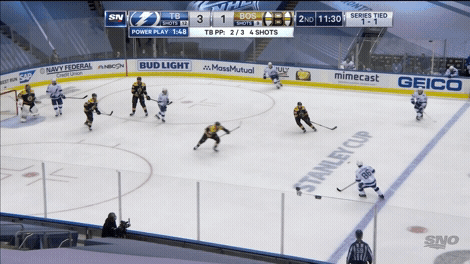
In the next round, the Bolts had a game where they again established the metaphorical run early. Less than nine minutes into a tie game, Kucherov — see if you can spot the trend here — again brings the puck from high to low and pulls the PKers with him, opening up the top. (If you’re the Lightning PP coach and you want to establish this shot, that’s where you start — have Kucherov up high and skating down the wall, bringing PKers with him.)
He kicks it to the bumper guy Brayden Point, who finds Victor Hedman for a slapper from a pretty good spot.
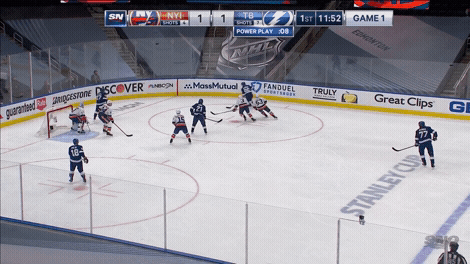
OK, so if Hedman has his shooting mojo going, if you’re a PKer the next time the puck goes low to high, you’re absolutely focusing on taking away that shooting lane, correct? In the next GIF, the score has gone from 2-1 to 4-1, and this one puts the Isles away.
JG Pageau gets out in Hedman’s lane, even pulling his legs closer together at one point to make sure nothing is getting on net if Hedman pulls the trigger. Scott Mayfield makes sure to get his butt in front of the net too, just to make sure no pucks get through (and to hope to box out the Tampa forward in front).
Shot established, that opens up lanes off the net, and Point finds one, calling for a shot off the net that he can redirect.
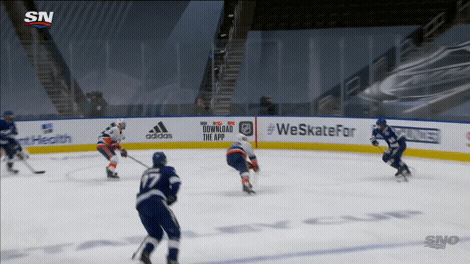
It’s not as easy to execute as it is to say, but these two skilled guys pull it off, at least partially because of the fear of the shot.
In Game 2 against Dallas, the shot doesn’t come from the top, but rather the bumper. Believe me, if teams could “establish” that shot every game they would, but it’s rarely open. It was open here at least partially because Kucherov is on his shooting flank, something Dallas has to honour. (I like that alignment for Tampa against the Stars.)
After this goal, Jon Cooper looked at his assistant coach like “OK well that plan worked,” and they surely know it does more than just put a one on the scoreboard. It changes how Dallas will likely defend.
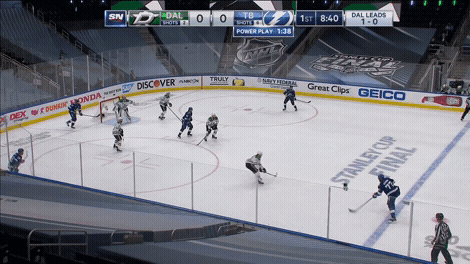
So the Lightning get a look they shouldn’t get there — the bumper shot — and now it’s on Dallas’ mind. They can’t allow another one from that same spot, and they know Kucherov likes to get a pass into that little window.
So Tampa carries on with two things on their next power play. The continue to establish the top as a shooting threat…

And then they take advantage of all Dallas’s defensive priorities — the fear of the middle, the threat of the top. Even though they’ve only been pulled to marginally different places on the rink, their brains are suddenly weighing the threats differently, and the ever-dangerous cross-ice seam opens up just enough.
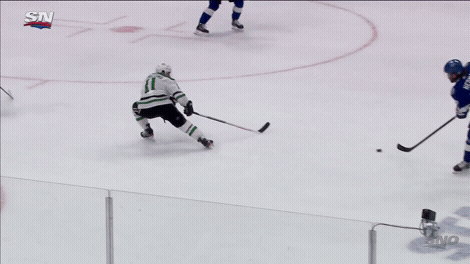
Tampa Bay misses Stamkos on the power play, because with his threat everything else gets easier, and when you’re as talented as the Lightning are, that little extra bit goes a long way.
If Stamkos isn’t going to be there, Tampa’s first priority has to be establishing this shot threat. They can pass and find seams, but those seams don’t open up without the bombs.
If Stamkos is there, well, that bomb threat establishes itself.



